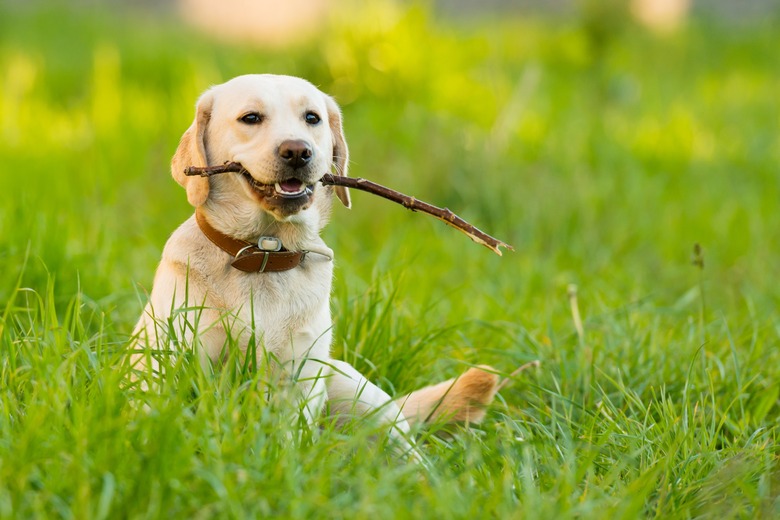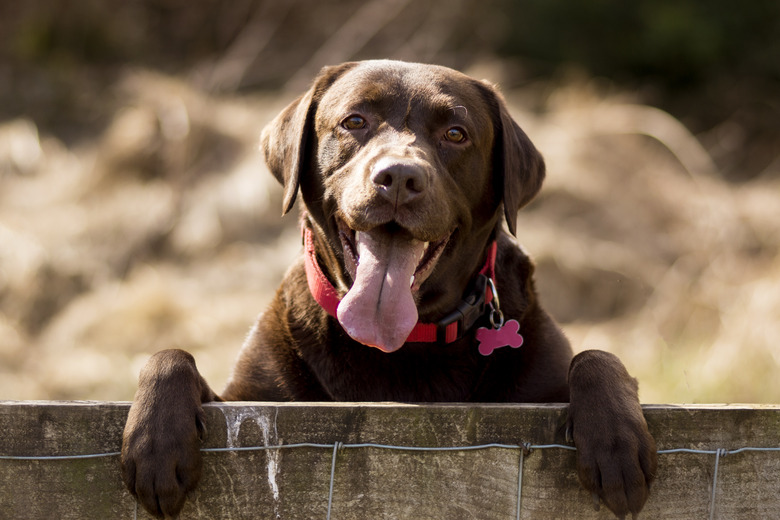How To Tell If Your Dog Is A Pure Lab
Labrador retrievers, known for their outgoing, friendly, and active natures, are ranked as the most popular American Kennel Club (AKC) breed. Registration papers from the AKC are the easiest way to know that you have a purebred lab. If you didn't receive these papers from a breeder, there are still ways to determine whether or not your lab is purebred or mixed with another breed.
Labrador retriever breed standard
Labrador retriever breed standard
Comparing your dog's characteristics to the breed standard is a good first step to help determine whether you have a purebred lab. Male labs grow to 22.5 to 24.5 inches tall and weigh 65 to 80 pounds. Female labs are a bit smaller, growing 21.5 to 23.5 inches tall and weighing between 55 and 70 pounds. Purebred dogs should measure within 0.5 inches of the standard height.
The dogs are strong and well-muscled with a balanced appearance. They have a wide skull and a powerful jaw. Their ears fall fairly close to the head and are set slightly above eye level. They should be well-proportioned and the tip of the ear should reach the inside of the dog's eye when pulled forward. The "otter" tail, which is heavy at the base near the body and tapers towards the end, is a distinguishing feature of the breed. Labs carry their tails at the same level as their bodies.
Dogs that don't conform to these standards are not likely to be purebred. If a lab has ears that are upright or a tail that is a different shape are likely mixed with another breed. If your dog carries her tail over her back or straight up, she is likely not a purebred lab.
Purebred lab coat and colors
Purebred lab coat and colors
Labs have a double coat, with the undercoat being much softer than the harsh, water-repellent top coat. While a slight wave is acceptable, the coat should be short and straight with no feathering. The breed only comes in three solid colors: black, yellow, and chocolate. A small white mark on the chest is allowed, but any other white markings or color patterns may indicate that the lab is not purebred.
While there are anecdotal differences between the colors of labs, they are the same breed and should adhere to the same standard. A male black lab and chocolate lab will have the same characteristics other than color. A long-haired black lab is likely mixed with another breed and is not a purebred black lab.
Some breeders may market a silver or white lab dog. These are likely not purebred dogs and do not adhere to the breed standard. The silver color is a recessive trait and while the origin is unknown, it may have come from cross-breeding a lab with a Weimaraner. A full-grown silver lab may have the same build and physical characteristics as a purebred lab, but likely has some other genetics in his background.
English Lab vs American Lab
English Lab vs American Lab
When comparing an English vs American lab, it is easy to think they may be a different breed. While each has differences in build, they both belong to the same breed and adhere to the breed standard. In general, American labs were bred with an eye toward hunting and fieldwork, while English labs were bred for the show ring.
An American black lab, for example, is likely to have a narrower head, longer muzzle and legs, and a lighter structure than an English lab. English labs tend to have a stockier build and thicker coats.
DNA testing for breed
DNA testing for breed
It is possible for a mixed breed dog to have the appearance of a purebred lab. If you want to be certain your lab is purebred, you can order a DNA test kit for your dog. There are several canine genetics testing companies to choose from. When you order a test kit, they will send you a box with instructions and swabs for obtaining a sample.
The test results will reveal what breeds appear in your dog's genetics. The amount of detail can vary by company. Some companies will also indicate whether your dog has a genetic predisposition to certain health conditions. If you are concerned about the results, consult your veterinarian and be aware that just because your pup may have a genetic risk for a disease does not mean that she will develop it.


